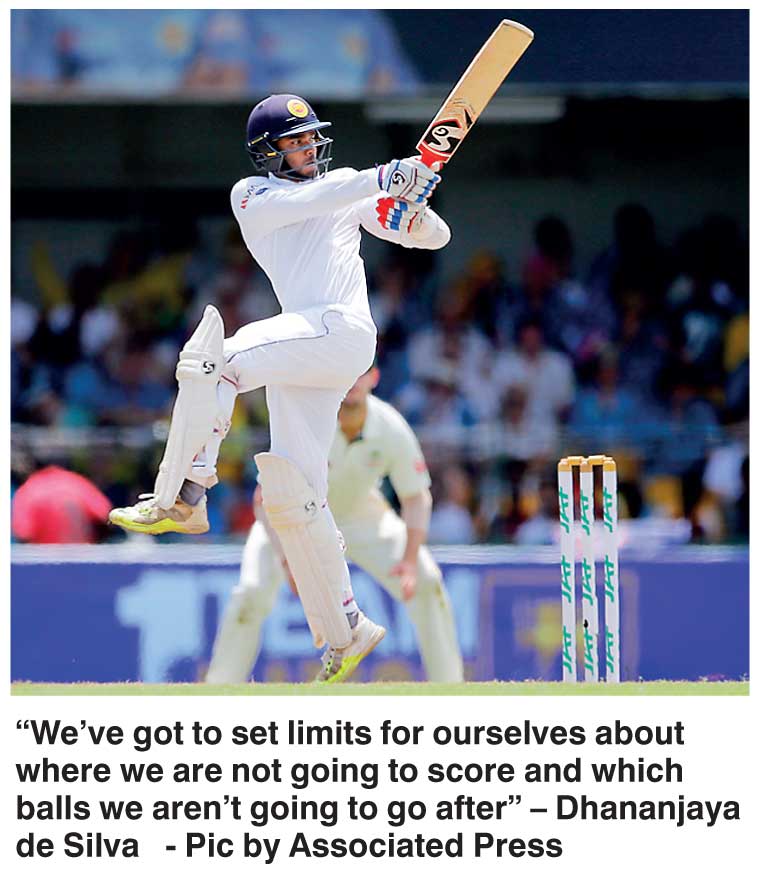Friday Apr 26, 2024
Friday Apr 26, 2024
Thursday, 12 January 2017 00:06 - - {{hitsCtrl.values.hits}}
 ESPNCricinfo: There is something quietly magnetic about Dhananjaya de Silva, and here I am not referring to those velvet legside flicks, or the sleepy six to get his first Test runs, though all of that help.
ESPNCricinfo: There is something quietly magnetic about Dhananjaya de Silva, and here I am not referring to those velvet legside flicks, or the sleepy six to get his first Test runs, though all of that help.
There is an understated confidence about him – the way he slouches at the crease, the lateness of his strokes against even screaming pace, the simplicity of his defence. This is not a man easily ruffled, you think. He doesn’t subscribe to the tattoos-and-hairdo school of millennial self-belief, for now, but the self-belief, nevertheless, is there.
Maybe this is why – or maybe it’s plain old youthful naivety – but where others are sensing a whitewash, de Silva is smelling opportunity. Two days out, there is less grass on the Wanderers pitch than there had been at a similar stage at Newlands or St. George’s Park. This is one of the fastest, bounciest venues in the world, but so what? If there is less seam movement, it might actually suit Sri Lanka, de Silva thinks.
“At Wanderers I think there’s extra pace and bounce, but as a subcontinent nation it’s the seam movement that makes things difficult for us,” he said. “I think we should be able to improve on the batting side, since the pitch doesn’t seam as much, from what we know. You can’t tell until you play, but I’m hopeful this will be more suited to us.”
Though he does self-belief, Dhananjaya has so far resisted self-delusion, and while there is hope about the conditions, he is aware of the gaping batting flaws that require addressing. On the team front, six out of seven batsmen were out playing attacking strokes on a difficult track at Newlands. At training on Tuesday, most batsmen were seen practicing the defence or the leave.
“I don’t think we need to make huge changes to the way we bat or bowl, but we do need to adjust to the situation better – we need to limit our shots,” de Silva said. “We can’t hit shots all around the ground like in Sri Lanka, or even Zimbabwe. We’ve got to set limits for ourselves about where we are not going to score and which balls we aren’t going to go after.
“We do all have that confidence with the bat, but we need to fine-tune our approach. If someone starts getting a big innings, we all need to rally around him. We need to get a big enough total to give our bowlers something to defend. But I think we can give them a fight.”
De Silva must be foremost among those switching to a more survivalist mentality, because seven Tests into his career, he has a new role that demands of him patience and responsibility. Although he averaged 60.60 at positions 5, 6 and 7 – where he had batted in most of his first six Tests – he was shunted up to no. 4 at Newlands thanks to a top-order reshuffle aimed at finding a decent no. 3.
“When I batted seven, a lot of the time, my job was to bat with the tail,” he said. “I often try to score quick runs because the tail is vulnerable, and we need to get as many as possible for the team. When I go second drop, sometimes I can’t play my strokes, because I’m trying to play a long innings. I have to stay at the wicket to get runs. I think I prefer no. 7, but this is my role.”